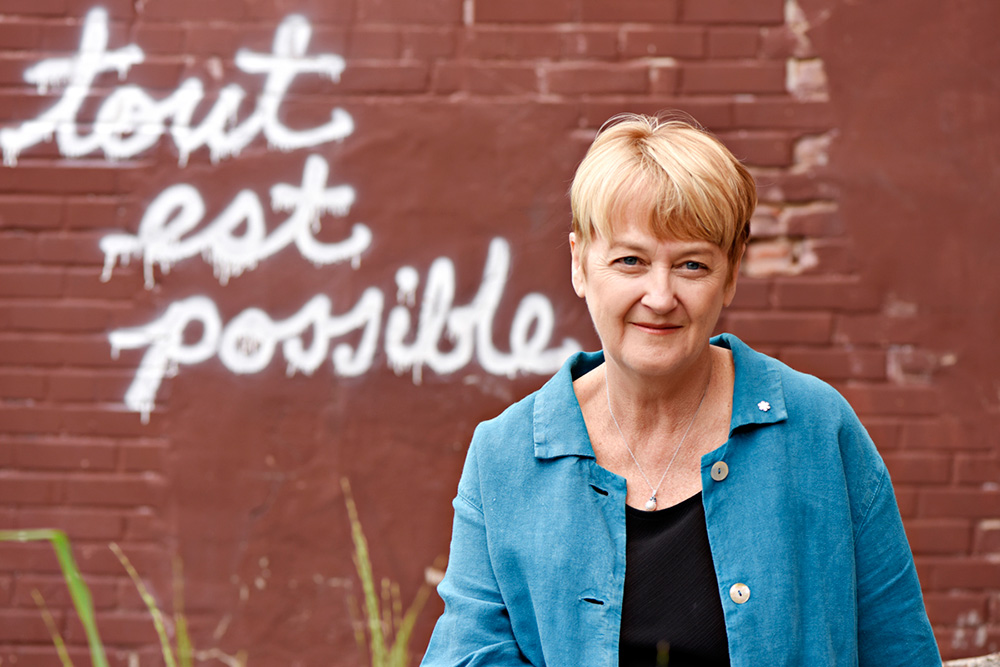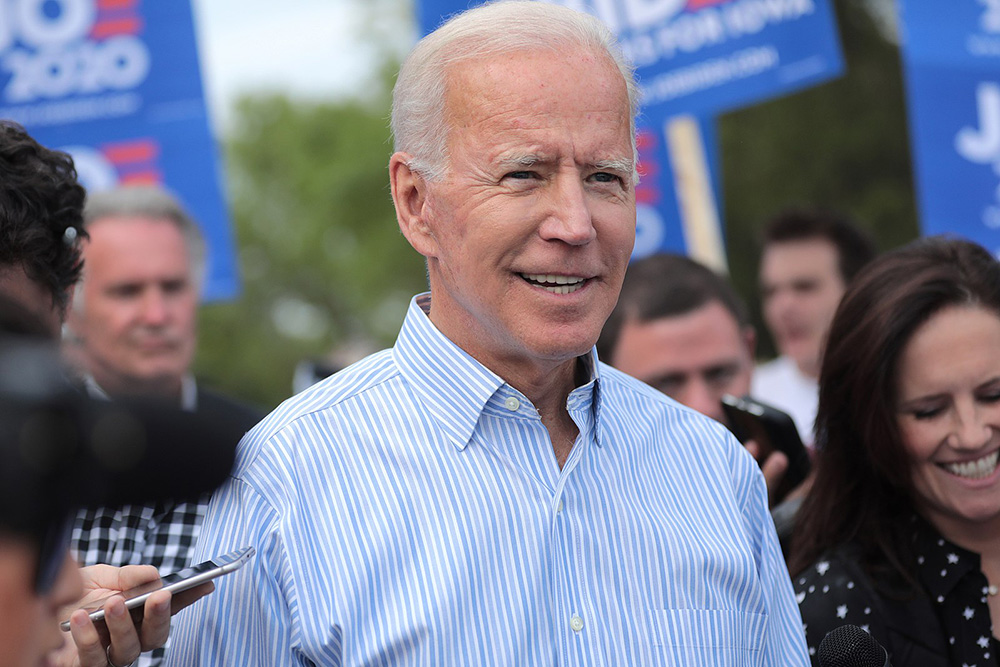The election of Joe Biden has quietly brought into the political mainstream an idea uniting the fights against out-of-control home prices and greenhouse gas emissions.
“To be honest, I think this is one of the single best things in his climate plan,” Daniel Aldana Cohen, a University of Pennsylvania sociologist who saw firsthand how Biden’s green commitments came together, told The Tyee.
The Democratic president-elect will enter the White House with a promise to build 1.5 million green affordable homes over the next four years. “He will ensure these homes are energy efficient from the start — saving the families who live there up to $500 per year,” the plan reads. Whether this gets implemented amid the current political chaos of the U.S. is a different question, but the fact that something approaching a Green New Deal for housing is being embraced by the highest levels of the U.S. government is remarkable, Cohen said, considering that only a few years ago this idea was on the margins of public debate.
Some advocates believe there is a political opening for housing and climate movements in Canada to push something similar.
“We’re facing serious overlapping existential challenges: a pandemic, an economic freefall and the climate crisis intensifying everything,” Avi Lewis, co-founder and strategic director of a climate organization called the Leap, told The Tyee. “Something like a Green New Deal for housing is a fantastic crystalizing of all the opportunity for progress in this moment.”
Last year, housing and climate activists attempted to sketch out what such an approach could look like in Vancouver, ground zero of Canada’s affordable housing emergency.
Packed into a community centre on the Downtown Eastside, “a convergence of renters and environmentalists who might not normally end up together” spent several hours discussing areas of overlap between their existing work and growing movement for a made-in-Canada Green New Deal, said Mazdak Gharibnavaz, the event’s facilitator and a member of the Vancouver Tenants Union. “It was a super interesting discussion.”
Participants wrote down ideas in sharpie on paper taped to the wall. Their ideas evoked a city containing large numbers of publicly-owned housing units, like what Canada used to build during the postwar years up to the 1990s; affordable and walkable neighbourhoods for Indigenous people, low-income renters and others currently displaced by Vancouver’s housing crisis; residents commuting to their unionized green jobs on free public transit.

It didn’t go much further than that, Gharibnavaz said, because the coalition pushing for a Canadian Green New Deal largely dispersed after the 2019 federal election. But the Leap was paying attention to and learning from these and other thought experiments across the country and south of the border. Lewis now thinks that with the political shifts underway in the U.S., and the massive dislocations and pain caused here by the pandemic, it’s time to re-examine the idea of bold, federally-led investments in housing.
“When you think about the housing crisis in Canada, the homelessness crisis in Canada, the joblessness crisis and the climate crisis, you have a solution which is literally where we live that offers us the opportunity to address all these intersecting crises at once,” he said.
‘We’ve been huge leaders in it’
The idea that the Liberal government would annually fund tens of thousands of new affordable homes built to the highest environmental standards might seem far-fetched. But that’s not so different from what successive federal governments did in the decades following the Second World War. Until it was cancelled in the early 1990s, Canada’s national housing program was building 20,000 non-market homes across the country per year. It was a time when “10 per cent of total housing production was non-profit, municipal non-profit, or co-operative housing,” according to a report co-written by University of Toronto housing expert David Hulchanski.
“We’re taught that affordable housing is complicated,” Cathy Crowe, a Toronto street nurse and decades-long housing advocate who is now a Distinguished Visiting Practitioner at Ryerson University, told The Tyee. “Yet we’ve been huge leaders in it.”
But there’s another lesson from this history that Crowe thinks is crucial to remember: the federal housing program was the result of loud, effective and attention-grabbing protest.
After the Second World War ended, veterans returned from Europe to a dire affordable housing shortage. “There was no place to live. There were expensive hotels, but we were just getting out of the army with no money. We couldn’t very well do that,” one veteran recalled to The Tyee in 2006. So veterans began organizing demonstrations across the country. They squatted in a Montreal military hospital, took over an Ottawa army barracks and led mass parades and pickets. In B.C., 35 soldiers marched into the Vancouver Hotel on Seymour Street, hanging up a banner that read “Action at Last Veterans! Rooms for you. Come and Get them.”
Newspapers covered these protests across the country closely. “It was a sensational scandal that generated front-page stories,” Crowe said. And it resulted in real political change. Embarrassed in the press, the federal government brought in changes to the National Housing Act in 1949 that greatly expanded funding for social housing. This eventually grew into a program that by 1968 helped lay “the foundation for building a strong nation of well-housed, middle-income Canadians with national universal health care, old age pensions, and a social assistance benefit system,” Hulchanski’s report reads.

The program was rolled back in the early 1990s by Brian Mulroney’s Conservative government, and dismantled further under Jean Chrétien’s Liberals. At a time when social programs were being slashed in countries across the world, the political rationale was that private business should be building homes instead.
But Crowe sees the program as a template for Green New Deal-style government action on housing and the climate emergency — and she views the post-Second World War veterans protest movement as a playbook for how to achieve the necessary political pressure. “There needs to be a very large populist movement such as what developed then,” she said.
Climate policies that also fix inequality
In theory a Green New Deal for housing could have high levels of public support across the country. Last year, Seth Klein commissioned a national poll from Abacus Data testing language and concepts around the idea. Unsurprisingly, the author of the recent book A Good War concluded, Canadians care deeply about the climate emergency and the high cost of living — polls have shown these to be major issues for years.
But when Klein asked about the Green New Deal framework directly, which was described to respondents as creating “millions of jobs in the areas of economic/energy transition, affordable housing construction, reforestation, and in the caring economy (education, child care, elder care, etc.),” nearly 75 per cent affirmed their support.
Interestingly, he found tying the climate fight to policies that might reduce inequality didn’t reduce excitement for environmental policies — it actually increased it. Just 26 per cent of respondents said they “strongly support” phasing out all fossil fuels in Canada by 2030. But when that goal was paired with financial aid to low and moderate-income households to assist with the transition, “strongly support” rose to 41 per cent.
“That’s the appeal of the Green New Deal, which is that it links climate change and social issues in a way that gets levels of support far beyond what any political party can secure,” Klein said. “It has huge potential to be a winner.”
The skeleton for a federally-led green homes buildout currently exists in the federal government’s National Housing Strategy, which the Liberals have touted as a $40 to $55 billion per year effort to build affordable homes. However, experts like Hulchanski have raised concerns that the whole thing is a “public relations gimmick.” Some of the funding was only made available because affordable housing commitments dating back to the 1970s are expiring. The Parliamentary Budget Officer seemed to agree, concluding last year that “the Liberal government was not putting significant new money into housing,” the Globe and Mail reported.
Assuming that program could be strengthened to actually fulfill its promise of tens of billions of dollars per year in new affordable housing spending, it would not be hard to add a climate component. Including stringent green standards in a reinvigorated national housing program, such as building six-storey wood-frame housing developments meeting the strongest possible energy efficiency requirements, wouldn’t necessarily raise the construction costs, according to Monte Paulsen, a Passive House specialist for the Burnaby-based RDH Building Science (and former Tyee reporter). “The savings in energy costs more than pay for the slight construction premium,” he said.

The factors are all there for a Green New Deal for housing, Lewis believes. What Canada now needs, he thinks, is a nationally scaled-up version of the alliance the Vancouver Tenants Union briefly brokered during its thought experiment last year: housing and climate groups joining forces to pressure the federal government into action. This also is not a stretch to imagine, given that mainstream U.S. environmental organizations like the Natural Resources Defense Council are increasingly organizing behind the idea of “healthy, affordable and carbon-free homes.”
“There are more opportunities in the current political landscape than there are new coalitions ready to take advantage of them,” Lewis concludes.
Action can come quickly when activists on different issues decide to strategically work together on a common goal, as the recent U.S. election shows. The story of Biden’s promise to build 1.5 million affordable green homes in some ways began in February 2018, when Cohen wrote an article in the socialist magazine Jacobin arguing that the federal government should build “10 million new, public, no-carbon homes in ten years. And again. And again. And again.”
After the story made the rounds in housing circles, Cohen was contacted by the Homes Guarantee, an organization led by the grassroots organization People’s Action asking election candidates to support building 12 million new social housing units over the next decade. He ended up helping write a climate section for the guarantee, specifying that these units “must be built to the highest possible environmental standards.”
Much of that pledge’s language was then used in the housing plan put forward by Bernie Sanders, which promised to “end the housing crisis by investing $2.5 trillion to build nearly 10 million permanently affordable housing units.”
“Line-by-line, you can see our grassroots vision for a Homes Guarantee in Sen. Sanders’ plan,” People’s Action housing justice campaign director Tara Raghuveer said at the time.
Cohen subsequently helped research and write Sanders’ and Alexandria Ocasio-Cortez’s Green New Deal for Public Housing Act. After Biden won the Democratic primary, the centrist candidate attempted to bridge ideological divides with the progressive wing of the Democratic party by putting together a task force with Sanders and Ocasio-Cortez, who then pushed to get a commitment to green affordable homes included in the candidate’s official climate plan. Biden is currently promising to spend $640 billion on this goal.
“Biden’s plan is a lot less than what we’ve been demanding,” Cohen says of comparing the 1.5 million units the president-elect would build in four years compared to the four million under the Homes Guarantee plan. “But no one’s promised to build new social housing in decades.”
Klein thinks some version of this sequence of events could be replicated here: a transformative idea enters the public debate, is picked up by housing and climate activists and then pushed into mainstream politics through impossible-to-ignore protest and savvy policy maneuvering. “I’m not trying to be Pollyanna in saying it’s likely to happen, but what I’m saying is it’s possible,” he said. “It requires being liberated from these market-driven assumptions about how we get things done.”
This article is part of a series produced with financial support from SFU Vancity Office of Community Engagement. Support for this project does not necessarily imply endorsement of the findings nor content of this report. Funders neither influence nor endorse the particular content of reporting. Other publications wishing to publish this series, contact us here. ![]()
Read more: Housing, Environment

















Tyee Commenting Guidelines
Comments that violate guidelines risk being deleted, and violations may result in a temporary or permanent user ban. Maintain the spirit of good conversation to stay in the discussion.
*Please note The Tyee is not a forum for spreading misinformation about COVID-19, denying its existence or minimizing its risk to public health.
Do:
Do not: